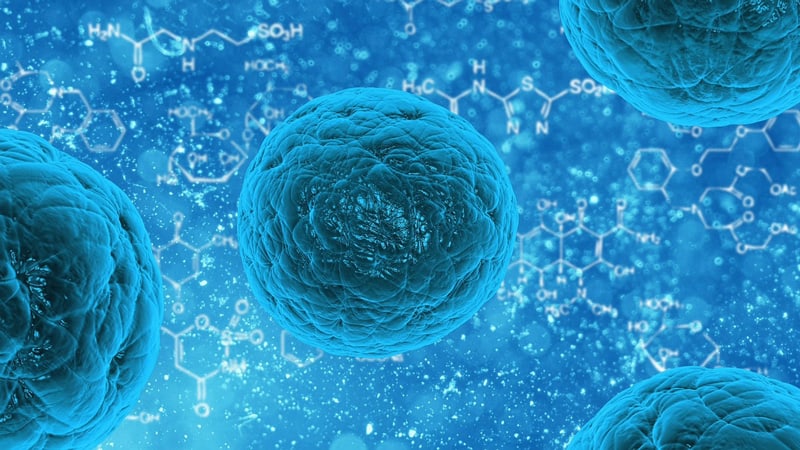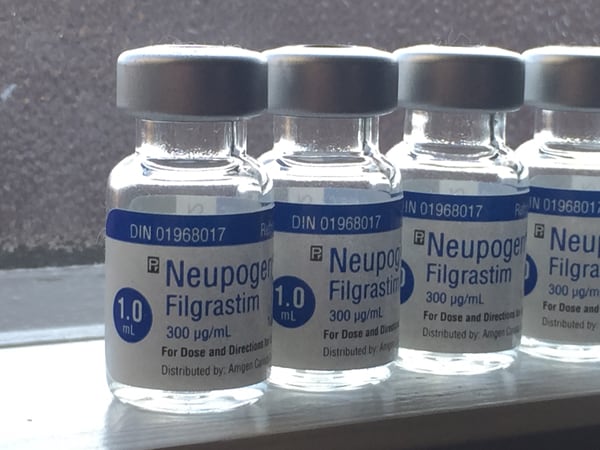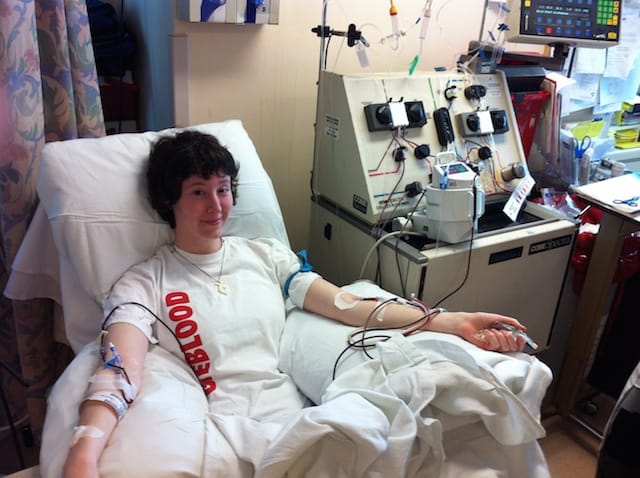Tired of the excess commercialism around the holidays? This year, give a selfless gift instead: join the bone marrow stem cell registry or donate blood.
Join the stem cell registry
Right now, hundreds of Canadians with life-threatening blood cancers such as leukemias, lymphomas and other blood disorders are out of options and need to find a matched donor for a stem cell transplant.
Stem cell donation facts
Many people have no idea how stem cell donation works and there are many misconceptions. Here are three things you should know:
1. Family members are most likely NOT going to be matches. A donor’s stem cells must match the recipient’s as closely as possible across ten human leucocyte antigen (HLA) markers, proteins found on the surface of a cell that tell the body if the cell is friend or foe. The objective is to minimize the risk of developing a life-threatening complication called graft-versus-host disease (GVHD) where the donor’s cells attack and destroy the patient’s cells. Since we inherit half of our HLA markers from our mothers and half from our fathers, there is only a 25 per cent chance that patients needing a transplant will find a match in related family members.
2. If you are a match for someone, they could be anywhere in the world. Some people don’t want to join the registry or donate unless they can be a match for someone they know. But due to the complexity of needing to find the right HLA match for each patient, that’s highly unlikely to work. Through the power of crowdsourcing and collaboration, more patients around the world find life-saving matches through international registries.
Canadian Blood Services’ OneMatch Stem Cell and Bone Marrow Network is one of more than 70 partners that belong to the World Marrow Donor Association’s international registry, which has more than 28 million people listed. The truth is that no country’s registry can meet the needs of their own patient population. Case in point: every year, an average of 60 stem cell donations are made by Canadians to save international patients and an average of 260 stem cell donations from other countries save the lives of Canadian patients.
3. Stem cells are usually collected from the blood. Peripheral blood collection, called apheresis, is the preferred collection method for about 60-70 per cent of donations. For several days before donation day, donors inject a drug called filgrastim to overproduce stem cells and promote their release into the bloodstream.
Typical symptoms include fatigue and bone and muscle aches, which go away after the donation is finished. For the donation, the donor sits in a procedure chair intravenous lines are inserted into veins in both arms. Specialized blood-filtering equipment draws blood through one arm, filters and collects stem cells into a collection bag and returns the remaining blood back into the other arm. The collection takes about four to five hours. If enough cells are not collected the first day, donors may be asked to donate again the following day.
I am proud that my daughter, at the age of 22, donated stem cells for an unknown recipient in the spring of 2013. Here she is hooked up to the apheresis machine at the Princess Margaret Cancer Centre in Toronto.
Less frequently, but sometimes necessary to guarantee the best cells for the recipient, a bone marrow operation is required. Marrow is drawn by needle from the hip bone while the donor is under general anesthesia, so they do not feel any pain.Donors usually return to normal activities immediately after surgery. If they experience pain or bruising for a few days after, it can usually be handled with over-the-counter medication.
With highly coordinated collaboration, international organizations transport stem cells around the world within 24 hours of donation.
Joining the OneMatch Stem Cell and Marrow Network is easy. If you are in good health and between the ages of 17 and 35, you may be eligible.
Donate blood
If you are disappointed that you are not in the target age range to donate stem cells, you can still give a precious gift of life by donating blood.
Canadian Blood Services reports that 55,000 more new blood donors are needed in the next five months before the end of March 2017 to maintain the national blood supply and meet the needs of Canadian patients needing transfusions for surgeries, procedures, cancer treatments, or to help manage other diseases. Leukemia patients, for example, need up to 8 units of blood a week to help replace the blood cells that chemotherapy treatments deplete.
Find a local clinic and book an appointment online through Canadian Blood Services.
When I was six years old, I was very lucky to receive a blood transfusion provided by an unknown donor to replace blood loss after a complication following tonsil surgery.
It all goes around and comes around.
Dedication
This post is dedicated to Chris LeBrun. He was a remarkable fellow who received a stem cell transplant from an anonymous donor in April 2015 and unfortunately passed away on December 6, 2015. I had the honour of interviewing Chris in October 2015 to learn about his journey and his advocacy efforts to promote stem cell and blood donation awareness.
Chris knew that his best chance to find a matched donor to treat his acute lymphoblastic leukemia (ALL), would be through the international registry. To pay it forward, he worked tirelessly to raise awareness to help others in need through local clinics and blood drives.
Together with his family and friends, their efforts added more than 1,000 potential donors to the international stem cell registry through swab clinics and more than 500 units of blood to local blood banks through Canadian Blood Services’ Partners for Life program in 2015 alone.
His family and friends continue to celebrate his life and his legacy of helping others through the public Facebook group Get It Done for Chris LeBrun. If you would like to help them reach their goal of 50 blood donations this December to celebrate the anniversary of Chris’ 50th birthday, use Partners for Life code # GETI 278531.





Jane, I read a blog post you did in March 2015 about your daughters donation of PBSC. My daughter is getting ready to do this in April. Wondering if there were ever any other side effects that you noticed after her donation. So very proud of her but wonder the long term effects.
Shelly, How wonderful that your daughter is going to donate in April. It’s been almost 4 years since my daughter donated and she’s been very healthy since. Thanks for reading this post and the one I wrote in March 2015 about her donation experience.
Best wishes to your daughter and let me know how it goes!
Jane
Great article Jane. Thank you!